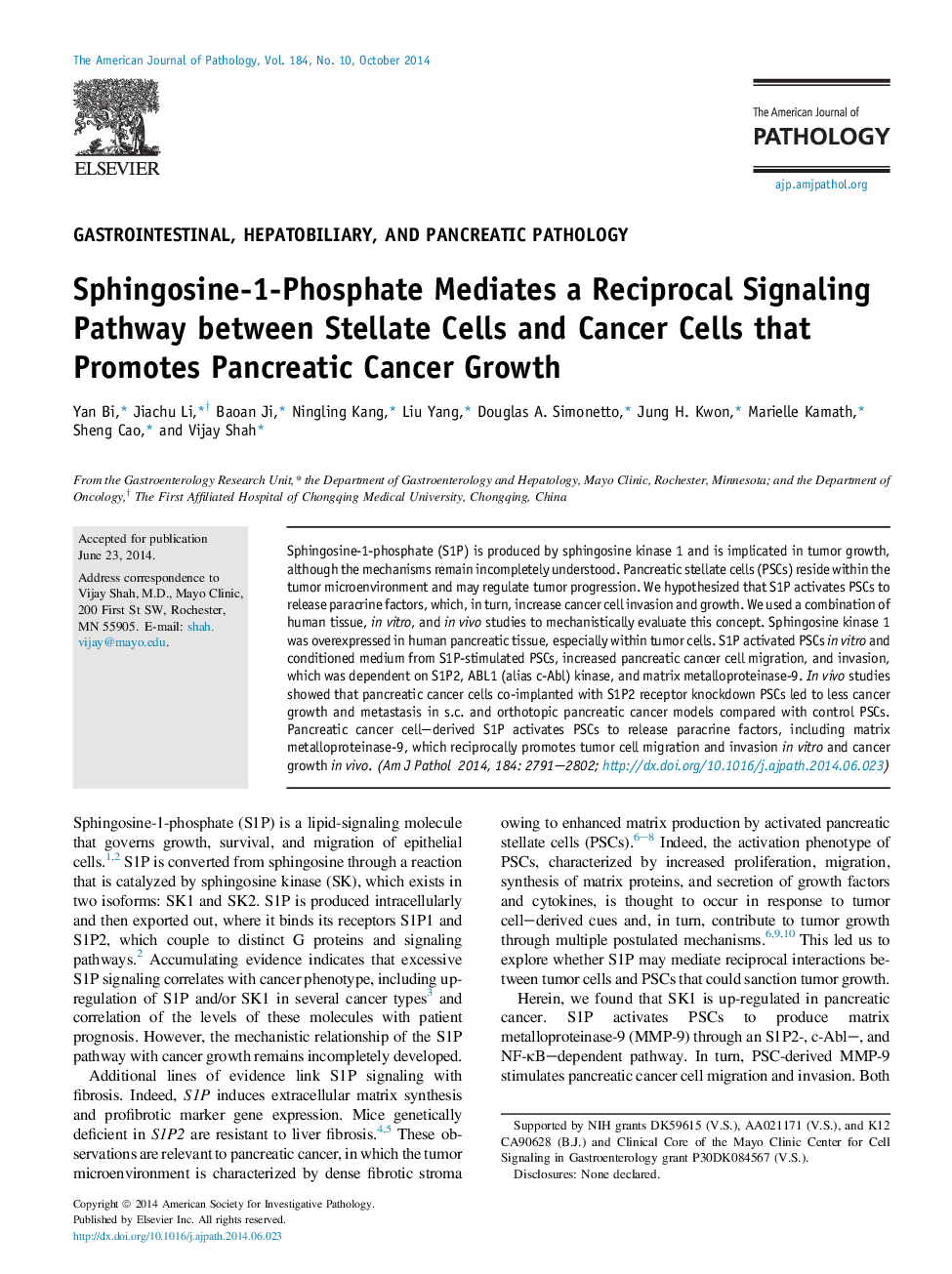| کد مقاله | کد نشریه | سال انتشار | مقاله انگلیسی | نسخه تمام متن |
|---|---|---|---|---|
| 5933570 | 1573387 | 2014 | 12 صفحه PDF | دانلود رایگان |
Sphingosine-1-phosphate (S1P) is produced by sphingosine kinase 1 and is implicated in tumor growth, although the mechanisms remain incompletely understood. Pancreatic stellate cells (PSCs) reside within the tumor microenvironment and may regulate tumor progression. We hypothesized that S1P activates PSCs to release paracrine factors, which, in turn, increase cancer cell invasion and growth. We used a combination of human tissue, in vitro, and in vivo studies to mechanistically evaluate this concept. Sphingosine kinase 1 was overexpressed in human pancreatic tissue, especially within tumor cells. S1P activated PSCs in vitro and conditioned medium from S1P-stimulated PSCs, increased pancreatic cancer cell migration, and invasion, which was dependent on S1P2, ABL1 (alias c-Abl) kinase, and matrix metalloproteinase-9. In vivo studies showed that pancreatic cancer cells co-implanted with S1P2 receptor knockdown PSCs led to less cancer growth and metastasis in s.c. and orthotopic pancreatic cancer models compared with control PSCs. Pancreatic cancer cell-derived S1P activates PSCs to release paracrine factors, including matrix metalloproteinase-9, which reciprocally promotes tumor cell migration and invasion in vitro and cancer growth in vivo.
Journal: The American Journal of Pathology - Volume 184, Issue 10, October 2014, Pages 2791-2802
